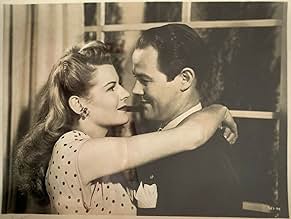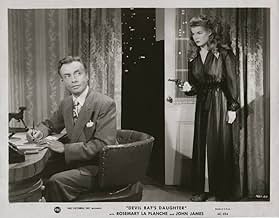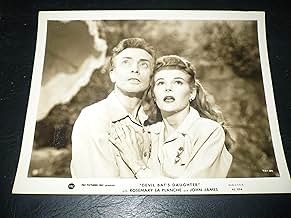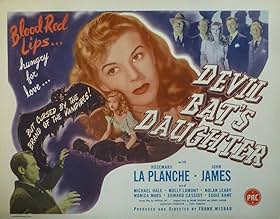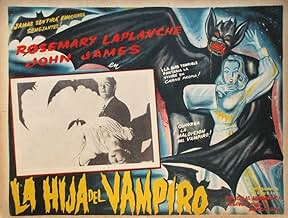1946's "Devil Bat's Daughter" proved a sad finale to a decent run of horror titles from Producers Releasing Corporation (PRC), director Frank Wisbar coming off the more impressive "Strangler of the Swamp," which also starred Rosemary La Planche, former Miss America of 1941. Screenwriter Griffin Jay had an interesting resume, first at Universal with "The Mummy's Hand," "The Mummy's Tomb," "The Mummy's Ghost" and "Captive Wild Woman," then Columbia with "The Return of the Vampire" and "Cry of the Werewolf," plus PRC's recent "The Mask of Diijon," a vehicle for Erich von Stroheim. What most of these admittedly minor efforts show is a proclivity to headline strong female characters, in particular Acquanetta and Nina Foch, screen newcomers like Rosemary who all enjoyed backgrounds in modeling before Hollywood came calling. Bela Lugosi fans still rejoice that their hero got to play the title role in "The Return of the Vampire," as it was his only actual vampire other than two films as Dracula, while this curiosity was intended to be a sequel to the Lugosi classic that kick started the studio's Poverty Row reign, 1940's "The Devil Bat," but with no one on board from the original it's no wonder that this storyline is so sorely lacking. This may well be the first instance where the original was altered for the sequel though hardly the last, as in 1981 the John Carpenter "Halloween" was granted a prime time airing with new footage added to make it better 'fit' the upcoming Rick Rosenthal follow up "Halloween II." Rosemary's character hardly speaks for much of her limited time on screen, relating how Lugosi's Paul Carruthers was a Romanian (like Armand Tesla in "The Return of the Vampire") who wed her Scottish mother before abandoning the family when the daughter was only 4, her mother soon dying of anemia eventually blamed on a 'vampire.' The original midwestern town of Heathville is now the New York locality Wardsley, where Carruthers engaged in experiments on 'cell growth stimulation,' escaped bats claiming a small number of innocent victims including the doctor himself, a far cry from setting them up with shaving lotion that attracted the flying death by fangs and claws. The girl spends much of the running time in a trancelike state, in the belief that her father was the 'Devil Bat' and that she must also suffer from inherited tendencies of vampirism. The actual villain of the piece comes as no surprise at all, Michael Hale as Dr. Clifton Morris clearly revealed early on as cheating on his wealthy wife (Molly Lamont) with her best friend (Monica Mars), intent on using poor Rosemary as the perfect foil to dispose of said spouse to gain access to her money (death implemented by scissors), only to run afoul of a stepson (John James) who inexplicably falls for the pretty headcase while simultaneously building a case against his mother's killer, a man he despises for obvious reasons. Griffin Jay's mastery at recycling meant that old ideas now became part of the new backstory at odds with the events from "The Devil Bat," and with its slim running time of 67 minutes occupied with discussions about things never shown or points already seen it becomes a struggle coming to grips for the viewer trying not to drift off into blissful sleep. Rosemary La Planche made a good impression in the lead of Wisbar's "Strangler of the Swamp" but here is largely absent during the second half, and dog lovers will not approve of one canine's demise, very different to the Great Dane in Monogram's John Carradine vehicle "The Face of Marble." June Lockhart played a similarly distressed victim in Universal's "She-Wolf of London," completed roughly two weeks before "Bat" shooting began on Jan. 9, more manipulations in store for the Jekyll family in 1951's "Son of Dr. Jekyll" and 1957's "Daughter of Dr. Jekyll."


